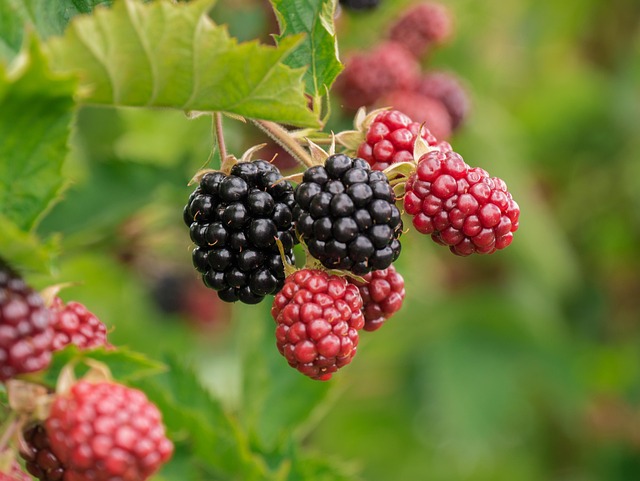Foraging for Flavor: Urban Wild Edibles Revolution
Discover the hidden treasures growing in your own backyard. Urban foraging is taking root as a sustainable, exciting way to connect with nature and elevate your culinary creations. From dandelion greens to wild berries, city dwellers are rediscovering the joys of harvesting local, seasonal ingredients right outside their doors. Join the movement and unleash your inner hunter-gatherer in the concrete jungle.

Wild Greens: The Gateway to Urban Foraging
For many aspiring urban foragers, wild greens are the perfect entry point. Common plants like dandelions, chickweed, and lamb’s quarters are not only easy to identify but also packed with nutrients and versatile in the kitchen. Dandelion greens, for example, offer a slightly bitter, peppery flavor that can elevate salads, soups, and even pesto. Chickweed, with its mild, spinach-like taste, makes an excellent addition to sandwiches and smoothies. As you become more familiar with these easily recognizable plants, you’ll start to see your urban environment in a whole new light. Remember, it’s crucial to properly identify plants before consuming them and to avoid foraging in areas that may have been treated with pesticides or other chemicals.
From Park to Plate: Cooking with Urban Harvests
Once you’ve gathered your urban bounty, it’s time to unleash your creativity in the kitchen. Wild edibles can add unique flavors and textures to familiar dishes or inspire entirely new culinary creations. Try tossing wild garlic mustard leaves into a stir-fry for a pungent kick, or use elderflowers to infuse syrups for cocktails and desserts. Experimenting with these ingredients not only expands your culinary repertoire but also connects you to seasonal eating patterns. As you become more attuned to the rhythms of urban plant life, you’ll find yourself eagerly anticipating the appearance of specific plants throughout the year, from spring’s tender shoots to autumn’s abundant berries.
The Forager’s Toolkit: Essential Knowledge and Gear
Successful urban foraging requires more than just enthusiasm – it demands knowledge, preparation, and respect for the environment. Start by investing in a reliable field guide specific to your region, as plant species can vary widely depending on location. Many cities also offer foraging workshops or guided walks led by experienced naturalists, which can be invaluable for beginners. In terms of equipment, a few key items can make your foraging expeditions more productive and enjoyable. A sturdy pair of gloves protects your hands while harvesting, while a small knife or scissors allows for clean cuts that won’t damage the plant. Don’t forget to bring reusable bags or baskets to carry your finds, and consider a camera or smartphone to document unfamiliar plants for later identification.
Foraging Etiquette: Sustainability and Safety First
As urban foraging gains popularity, it’s crucial to practice responsible harvesting to ensure the long-term sustainability of wild plant populations. Follow the “rule of thirds” – take no more than one-third of any plant you find, leaving the rest for wildlife and regeneration. Be mindful of local regulations, as some areas may prohibit foraging in public parks or protected areas. Safety is paramount when consuming wild edibles, so always be 100% certain of a plant’s identity before eating it. When in doubt, consult an expert or leave it be. It’s also wise to start with small amounts of any new wild food to test for potential allergic reactions. By approaching urban foraging with respect and caution, you can enjoy its benefits while preserving the delicate balance of urban ecosystems.
Urban Foraging Tips & Facts
• Always carry a reliable plant identification guide specific to your region.
• Avoid foraging near roads, industrial areas, or places that may be contaminated.
• Learn to identify at least three common edible plants in your area before expanding your repertoire.
• Wash all foraged plants thoroughly before consuming.
• Consider taking a guided foraging tour to learn from experienced foragers.
• Many common “weeds” like purslane and wood sorrel are not only edible but highly nutritious.
• Urban honey from local beekeepers can be considered a form of urban foraging.
• Some cities have interactive maps showing locations of public fruit trees.
• Foraging can help control invasive species by encouraging their consumption.
• Always leave enough of the plant for it to regenerate and for wildlife to enjoy.
Cultivating a New Urban Food Culture
Urban foraging represents more than just a culinary trend; it’s a shift in how we perceive and interact with our urban environments. By rediscovering the edible landscape hidden in plain sight, city dwellers are fostering a deeper connection to their surroundings and the natural world. This growing movement has the potential to transform urban food systems, promoting biodiversity, reducing food miles, and encouraging a more sustainable approach to nourishment. As you embark on your own foraging adventures, remember that you’re not just gathering ingredients – you’re participating in a rich tradition of human-nature interaction that spans millennia. So the next time you spot a patch of wild greens or a cluster of berries in your neighborhood, consider the delicious possibilities that await. With knowledge, respect, and a spirit of adventure, the city can become your own personal pantry, filled with flavors waiting to be explored.





